.
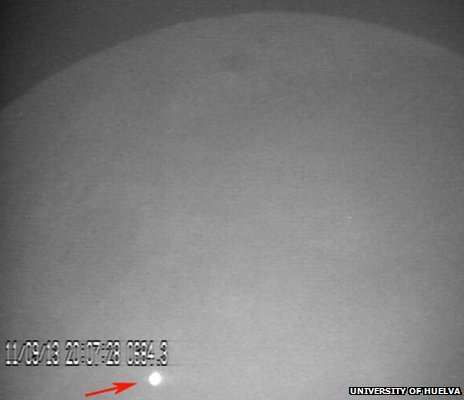
The impact appeared as a bright white flash on 11 September 2013
.
Scientists say they have observed a record-breaking impact on the Moon.
Spanish astronomers spotted a meteorite with a mass of about half a tonne crashing into the lunar surface last September.
They say the collision would have generated a flash of light so bright that it would have been visible from Earth.
The event is reported in the Monthly Notices of the Royal Astronomical Society.
"This is the largest, brightest impact we have ever observed on the Moon," said Prof Jose Madiedo, of the University of Huelva in south-western Spain.
Continue reading the main story
“
Start Quote
The impact we detected lasted over eight seconds”
Prof Jose Madiedo
University of Huelva
The explosive strike was spotted by the Moon Impacts Detection and Analysis System (Midas) of telescopes in southern Spain on 11 September at 20:07 GMT.
"Usually lunar impacts have a very short duration - just a fraction of a second. But the impact we detected lasted over eight seconds. It was almost as bright as the Pole Star, which makes it the brightest impact event that we have recorded from Earth," said Prof Madiedo.
The researchers say a lump of rock weighing about 400kg (900lb) and travelling at 61,000km/h (38,000mph) slammed into the surface of the Moon.
They believe the dense mass, which had a width of 0.6-1.4m (2-4.6ft), hit with energy equivalent to about 15 tonnes of TNT.
This is about three times more explosive than another lunar impact spotted by Nasa last March. That space rock weighed about 40kg and was about 0.3-0.4m wide.
Scarred Moon
The team believes the impact has left behind a 40m-wide crater.
"That's the estimation we have made according to current impact models. We expect that soon Nasa could observe the crater and confirm our prediction," said Prof Madiedo.
It would be one of many scars on the lunar surface.
Unlike Earth, the Moon has no atmosphere to shield it from meteorite collisions, and its surface shows a record of every strike.
The researchers believe that impacts from rocks of about 1m in diameter could be far more common than was previously thought - both on the Moon and on Earth.
However, most rocks of this size would burn up as they entered the Earth's atmosphere, appearing as a fireball in the sky.
For meteorites to make more of an impact here, they need to be larger.
For example, the asteroid that exploded over Chelyabinsk in Russia on 15 February 2013 was estimated to be about 19m wide.
It hit the atmosphere with energy estimated to be equivalent to 500,000 tonnes of TNT, sending a shockwave twice around the globe. It caused widespread damage and injured more than 1,000 people.
Quelle: BBC
.
Watch the Man in the Moon Get Hit in the Face: Video
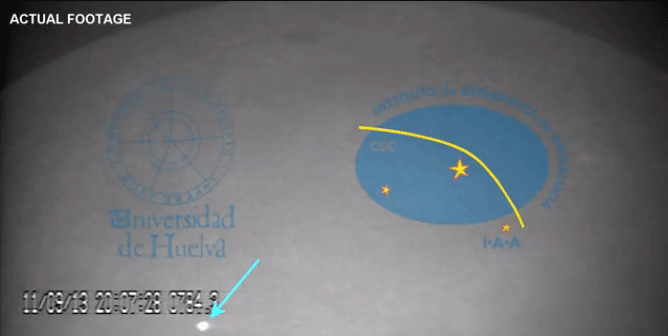
Our solar system may be well over 4.6 billion years old but it’s still a very active place, and in case you’d somehow forgotten that fact here’s a video of our very own lovely moon getting hit by a meteorite traveling an estimated 38,000 mph (61,000 km/h).
The footage was captured on camera on Sept. 11, 2013, by researchers J.M. Madiedo, J.L. Ortiz, and collaborators at the University of Huelva in southwestern Spain. Part of the MIDAS (Moon Impacts Detection and Analysis Software) project, the team’s observations are designed to detect such impacts by monitoring the lunar night side for bright flashes like the one above.
This particular impact is thought to have been caused by an 880-pound (400 kg) object two to four and a half feet (0.6-1.4 meters) wide. It struck the moon within the Mare Nubium region, one of the darker lava-flow “seas” which make up the “Man in the Moon” face. Because that part of the Moon wasn’t directly illuminated by the sun at the time, the impact flash and resulting thermal glow was visible to the MIDAS team.
For a brief few moments the impact site was even brighter than the North Star — which at 2nd magnitude is far from the most brilliant star in the sky, yes, but this was still a bright impact!
Because the moon lacks any substantial atmosphere, we don’t see meteors streaking down toward its surface or exploding at high altitudes like what happened over Chelyabinsk in Feb. 2013. It’s just the sudden flash of a direct hit at full space velocity, and the gradual dimming of the leftover heat.
It’s estimated that the Sept. 2013 impact released the energy equivalent of 15 tons of TNT, and may have excavated a crater 130 feet (40 meters) across. It was the brightest, longest confirmed impact flash ever captured on camera.
Just for comparison, the Chelyabinsk meteor was much larger — 19 meters wide with an aerial explosion equal to almost 600,000 tons of TNT.
According to Madiedo and the MIDAS team, their findings have shown that the impact rate on Earth (which is directly related to the lunar impact rate, for obvious reasons) is an order of magnitude higher than previously thought. And so, as Neil Tyson said… how’s that space program coming along?
Quelle: D-News
.

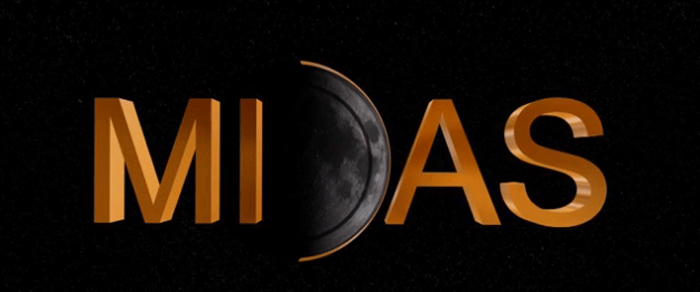
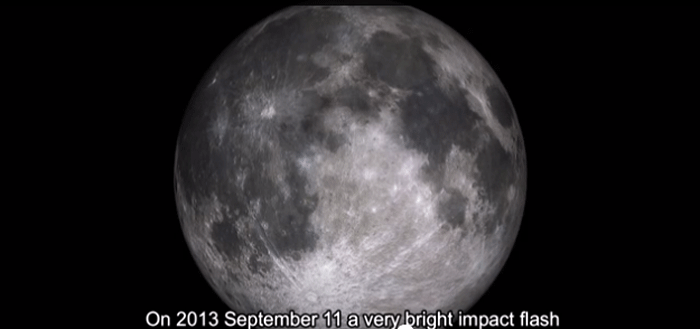
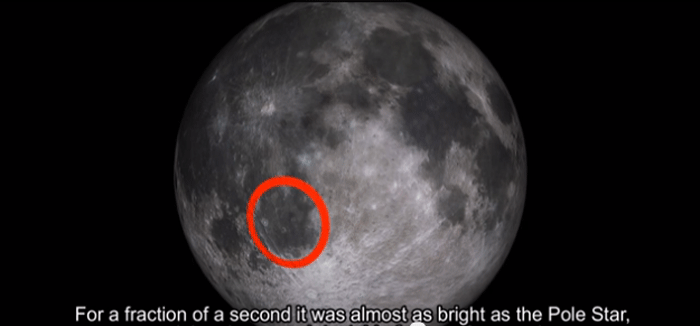
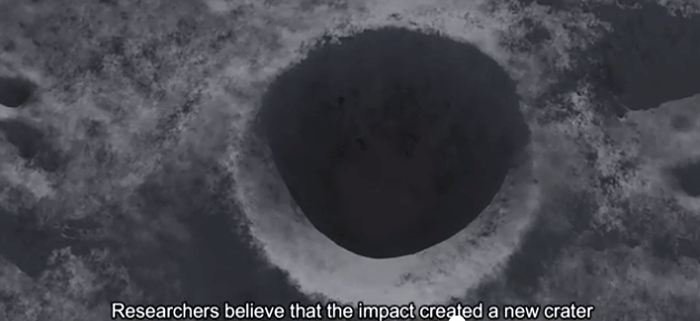
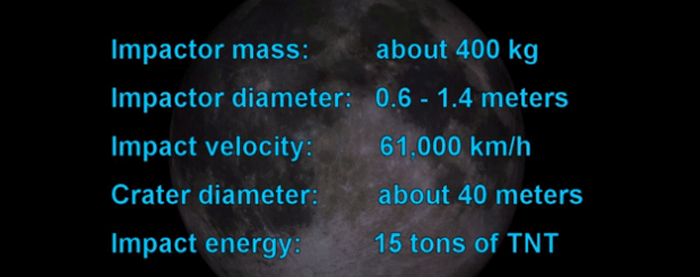
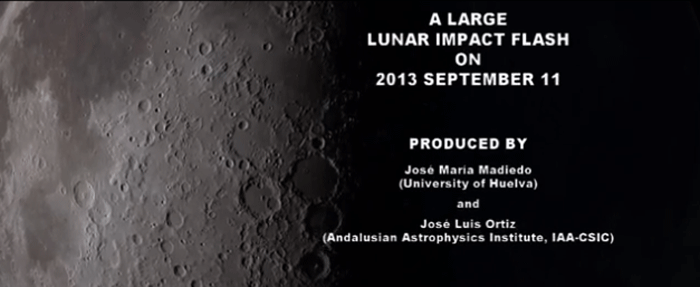
Quelle: MIDAS
5479 Views
